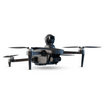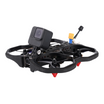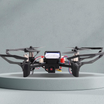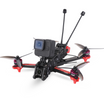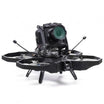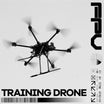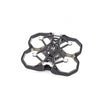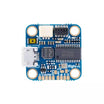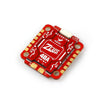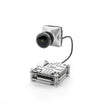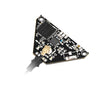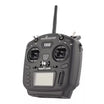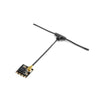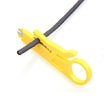Introduction
The film industry in India is rapidly evolving, with innovative technologies like drones revolutionizing the way movies are made. While these unmanned aerial vehicles open up a world of creative possibilities for filmmakers, their use is subject to a complex web of regulations and guidelines. Navigating India's legal framework for drone operations in the context of filmmaking can be challenging, but understanding and adhering to these rules is crucial for responsible and lawful drone usage.
The Digital Sky Platform: India's Comprehensive Drone Regulatory Framework
Recognizing the need for a structured approach to drone operations, the Indian government, through the Directorate General of Civil Aviation (DGCA), launched the Digital Sky Platform in 2018. This comprehensive regulatory framework outlines the rules and guidelines for various aspects of drone usage, including registration, flight permissions, safety protocols, and more. By establishing a centralized system, the Digital Sky Platform aims to ensure the safe and responsible integration of drones into Indian airspace.
Understanding the Digital Sky Guidelines: A Legal Perspective
Filmmakers planning to use drones for their projects must familiarize themselves with the Digital Sky guidelines, which cover a range of legal requirements and procedures:
- Registration and Permits: Under the Digital Sky regulations, all drones must be registered on the platform, and operators must obtain the necessary permits before flying. This involves acquiring a Unique Identification Number (UIN) for each drone and obtaining relevant licenses and permissions from the DGCA. Failure to comply with these registration and permit requirements can result in legal consequences, including fines and confiscation of equipment.
- Flight Restrictions: Certain areas are designated as "no-fly zones" under the Digital Sky framework, such as airports, military installations, and sensitive locations. Filmmakers must be aware of these restricted areas and avoid flying drones in these zones to prevent potential hazards and legal repercussions. Violating flight restrictions can lead to severe penalties, including criminal charges in some cases.
- Safety Guidelines: The Digital Sky Platform emphasizes safety as a top priority, and filmmakers must adhere to guidelines regarding maximum altitude, line-of-sight operations, and other safety protocols. These regulations are in place to ensure the safety of both the drone operator and those around them. Failure to comply with safety guidelines can result in legal action, including fines and the suspension or revocation of drone operator licenses.
The Competitive Edge of Drone Filmmaking
While compliance with legal and regulatory requirements is essential, using drones for filmmaking can provide significant advantages and opportunities for filmmakers in India:
- Unique Perspectives: Drones offer an aerial view and the ability to capture aerial shots that were previously challenging or even impossible to obtain. This unique perspective can add depth and dynamism to a film, creating a sense of awe and wonder for the audience.
- Cost-Effective Solution: Compared to traditional methods of aerial photography, such as helicopters or cranes, drones are a more cost-effective solution. This accessibility allows filmmakers with limited budgets to incorporate stunning aerial shots into their projects, leveling the playing field and enabling smaller productions to compete with larger ones.
- Increased Viewership and Audience Engagement: The captivating visuals and unique perspectives offered by drone footage can help increase viewership and audience engagement. Audiences are drawn to innovative and visually stunning content, and the use of drones can help filmmakers create content that stands out and leaves a lasting impression.
-
The elevate drone by insideFPV is specially designed for creative professionals and filmmakers. It is an advanced cinema drone equipped with features like a 4K camera resolution and gimbal, long flight time, precision hovering capability, safety sensors, and smart shot functions. As it is compliant with Digital Sky norms, the elevate drone simplifies securing permissions and licenses. Its intuitive controls, pre-programmed shots, object tracking and advanced stability features can greatly aid in aerial filming and content creation. Using such a drone that facilitates ease of operations, creative freedom and productivity can enable filmmakers to focus on their craft.
Examples of Drone Filmmaking in India
Several Indian filmmakers have successfully incorporated drones into their projects, showcasing the potential of this technology in the Indian film industry while adhering to legal requirements:
- "Baahubali: The Beginning" (2015): This epic historical fiction film used drones to capture breathtaking aerial shots of the fictional kingdom of Mahishmati, adding depth and grandeur to the film's visual landscape. The production team obtained the necessary permits and followed all safety guidelines to ensure legal and responsible drone usage.
- "Masaan" (2015): Acclaimed director Neeraj Ghaywan utilized drones to film the iconic Ghats of Varanasi, providing a unique perspective on the city's historic architecture and cultural significance. The team worked closely with local authorities to secure the required permissions and ensure that all flights were conducted within the bounds of the law.
- "Padman" (2018): Director R. Balki used drones to capture stunning aerial shots of rural India, showcasing the beauty and vastness of the landscape while highlighting the film's social message. The production team registered their drones and obtained the necessary permits, ensuring compliance with the Digital Sky guidelines.
The Importance of Safety, Security, and Privacy
While drones offer numerous benefits for filmmaking, it's crucial to prioritize safety, security, and privacy when operating these devices. The Digital Sky Platform provides guidelines to help filmmakers use drones responsibly and minimize potential risks:
- Safety: Adhering to safety protocols, such as maintaining line-of-sight operations and avoiding populated areas, is essential to prevent accidents and ensure the safety of both the drone operator and those around them. Failure to follow safety guidelines can result in legal action, including fines and the suspension or revocation of drone operator licenses.
- Security: Filmmakers must be mindful of potential security risks associated with drone usage, such as accidental intrusions into restricted areas or capturing sensitive information. Adhering to the Digital Sky guidelines can help mitigate these risks and ensure responsible drone operations, preventing legal consequences.
- Privacy: It's important to respect the privacy of individuals and property when filming with drones. Filmmakers should avoid capturing footage that infringes on personal privacy or trespasses on private property without proper permission. Violation of privacy laws can result in legal action, including civil lawsuits and criminal charges.
Repercussions of Violating Guidelines
Violating the Digital Sky guidelines can result in severe legal consequences, including fines, confiscation of equipment, and even criminal charges in some cases. It's crucial for filmmakers to familiarize themselves with the regulations and ensure they are operating within the bounds of the law to avoid legal and financial repercussions. Failure to comply with registration, permit, flight restriction, safety, security, and privacy requirements can lead to significant legal consequences, potentially jeopardizing a filmmaker's ability to continue using drones for their projects.
Conclusion
Filmmaking with drones in India offers a world of possibilities, allowing filmmakers to capture stunning visuals and create content that captivates audiences. However, it's essential to understand and adhere to the Digital Sky guidelines and other relevant legal requirements to ensure safe, lawful, and responsible drone operations. By prioritizing compliance with regulations, safety, security, and privacy, filmmakers can leverage the unique capabilities of drones while avoiding potential legal pitfalls. With a comprehensive understanding of the legal framework and a commitment to responsible usage, the Indian film industry can continue to innovate and push creative boundaries through the integration of drone technology.
Frequently Asked Questions:
What permissions and licenses do I need to operate drones for filmmaking in India?
You need to register your drone on the Digital Sky platform to obtain a Unique Identification Number (UIN), acquire an unmanned aircraft operator permit (UAOP) from the DGCA, secure necessary clearances before flights, and follow all other guidelines related to permits, licenses, and flight permissions specified under the Digital Sky framework.
What are the penalties if I violate the drone regulations in India?
Penalties for violating drone regulations can include fines, temporary suspension or permanent cancellation of licenses and permits, confiscation of drone equipment, and even criminal charges depending on the type and severity of violation. You could be fined for things like flying in no-fly zones, violating safety guidelines, or infringing on privacy.
Where can I legally fly drones for filmmaking? Are there restrictions on location?
There are many flight restriction zones in India where operating drones is legally prohibited, like near airports, borders, strategic locations etc. You must check the Digital Sky app or platform for a map of such restricted areas. Apart from those, permissions may be required for flying over private or controlled airspace.


